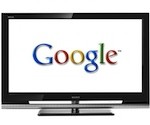 The demo at Google I/O 2010 had lots of glitches, but the importance of Google TV for the developer community and for the TV-watching public cannot be overestimated. As “putting a man on the moon by the end of the decade” rallied the NASA engineers (developers) to accelerate development of new fuels, engines, computers and a broad spectrum of other technologies; putting Google users on the couch takes on some surprising dimensions – including social networking, voice search (and navigation), video processing (Flash on Intel Atom) and set-top boxes/remote controls.
The demo at Google I/O 2010 had lots of glitches, but the importance of Google TV for the developer community and for the TV-watching public cannot be overestimated. As “putting a man on the moon by the end of the decade” rallied the NASA engineers (developers) to accelerate development of new fuels, engines, computers and a broad spectrum of other technologies; putting Google users on the couch takes on some surprising dimensions – including social networking, voice search (and navigation), video processing (Flash on Intel Atom) and set-top boxes/remote controls.
The optimist in me wants all of the piece parts to work together seamlessly. The reality is bound to be quite different. As was demonstrated by interference in the conference venue, things are bound to go wrong (as the display of Nicolas Cage “animal sex diet” during the demo dramatized). But that did not blind the developer community (or indeed the CEO’s from Intel, Best Buy, Sony, Adobe and DishTV) of the transformative potential of adding “seamless” and simultaneous search to accompany the five hours of TV watching that people are ordinarily doing.
From the RC (Recombinant Communications) perspective, Google claims that development of new applications will benefit from its “open” approach. As described on the Google Developers Blog, the software, OS guts and APIs are the household names of open computing: Android, Chrome and Ajax. The application development toolkits are not fully developed, but they start with the SDKs for Chrome and Android.
From a competitive point of view, Google is treading where Apple (with AppleTV) and Cisco (with its “ownage” of ScientificAtlanta and LinkSys for couchside products), along with Motorola, Philips, Tatung and the mainstream set-top box makers have already done their best to fragment the market. What Google brings to the game as differentiaters is the power of its advertising-based business model along with its experience (and existing functionality) in real-time search/social search, voice search and speech-to-text transcription/translation.
Each of these elements has the potential to spark the imagination of users, as well as the development community. But they are also fraught with risk. Speech-to-text transcription (much less translation) has already created fodder for all sorts of ridicule. Quality is bound to improve over time, but neither transcription nor translation will ever be perfect and much of the early energy should be dedicated to managing expectations.
Categories: Articles

 NiCE Interactions 2025: Agentic AI, Better Data, and a Whole Lot of Partnership
NiCE Interactions 2025: Agentic AI, Better Data, and a Whole Lot of Partnership  Getting It Right: What AI Agents Actually Mean for Customer Support (Webinar)
Getting It Right: What AI Agents Actually Mean for Customer Support (Webinar)  Beyond the Basics: How AI Is Transforming B2B Sales at TP
Beyond the Basics: How AI Is Transforming B2B Sales at TP  Five9 Launches Agentic CX: Toward AI Agents That Reason and Act
Five9 Launches Agentic CX: Toward AI Agents That Reason and Act